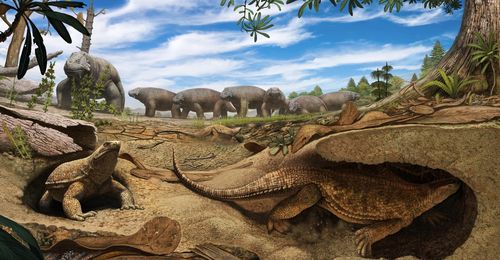Why Turtles Evolved Shells

Why Turtles Evolved Shells
7/26/2016
link
summary
This article challenges the commonly held belief that the evolution of the turtle shell was primarily for defense. It argues that the shell actually evolved as an adaptation for digging, rather than protection from predators. The author examines the evidence from fossil records and comparative anatomy to support this claim. The article suggests that the ancestors of turtles were burrowers, and the development of a sturdy shell allowed them to efficiently dig and maneuver through loose soil. This alternative explanation for the evolution of the turtle shell provides a new perspective on the adaptive value of this unique anatomical feature.
tags
evolutionary biology ꞏ turtle ꞏ shell ꞏ animal adaptation ꞏ defense mechanisms ꞏ natural history ꞏ paleontology ꞏ vertebrate evolution ꞏ animal behavior ꞏ animal anatomy ꞏ animal morphology ꞏ reptiles ꞏ evolutionary history ꞏ animal locomotion ꞏ animal evolution ꞏ animal fossils ꞏ biological adaptation ꞏ vertebrate paleontology ꞏ turtle evolution ꞏ animal protection ꞏ animal survival ꞏ animal diversity ꞏ animal species ꞏ animal traits ꞏ animal habitat ꞏ animal ecology ꞏ animal classification ꞏ animal conservation ꞏ animal research ꞏ animal science ꞏ animal studies ꞏ animal biology ꞏ animal kingdom ꞏ animal intelligence ꞏ animal communication ꞏ animal cognition ꞏ animal instincts ꞏ animal habitats ꞏ animal genetics ꞏ animal reproduction ꞏ animal welfare